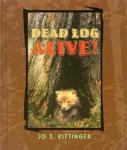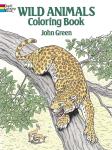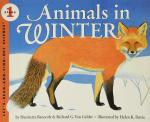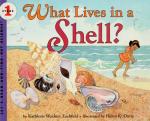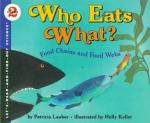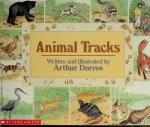Animal Life
Dead Log Alive!
This book provides an interesting and detailed look at what comes to live in and around a dead log – woodpeckers, squirrels, mushrooms, fungi, moss, molds, porcupines, foxes, snakes, scorpions, millipedes, centipedes, pill bugs, salamanders, ants, termites, and beetles. Includes many interesting color photos and details about each species, how to tell them apart and much more. The book also includes an index, a glossary and suggestions for further reading.
Wild Animals Coloring Book
A very nice, detailed and academic-oriented coloring book for learning about wild animals. In addition to beautiful line drawings of 47 different animals from around the world, the text provides common and scientific names and details about appearance, location, habits, size, etc. The index includes both common and scientific names as well, for easy look-up. Illustrations are royalty free (within certain conditions) and may be copied for use within your family.
Dover offers a couple of examples of how the finished images might look:
Animals in Winter
A beautifully illustrated look at where various animals go when it snows and how they prepare for winter. We learn details of the migration of various animals (such as birds, butterflies and bats), animals that hibernate, animals that store up food for the winter and animals that have to find their food throughout the winter. Includes instructions for feeding birds and other wild animals in your own backyard.
Biology for Every Kid
In its segment on "Experiments that Teach Us About Ourselves: The Amazing Human Body" this book provides 35 experiments about the body (the other segments of the book are about plant and animal life. While certainly not a comprehensive anatomy course, the book does provide interesting and simple experiments (which can easily performed at home with fairly ordinary materials) that would provide a helpful supplement to the study of anatomy.
What Lives in a Shell?
This beautifully illustrated book, designed for preschool and kindergarten, explains different kinds of shells and the creatures that inhabit them. The shells are compared to the shelter occupied by people and by other animals. We learn that some shells do grow larger along with certain animals while other animals must shed their out-grown shell in favor of a new one. Many shells are beautifully depicted and identified and the story-format of the text is very easy and interesting for young children to follow.
Who Eats What? Food Chains and Food Webs
This book explores the notion of various plants and animals that are linked together based on "who eats what." Children will learn about some simple food chains such as – leaf, caterpillar, wren and hawk. They also see how one plant or animal can belong to several food chains and that members or these related food chains (food webs) have a certain amount of dependence on each other. The text goes on to explain, through an example of a problem with over-hunted otters around the turn of the century, that when part of a food chain is disturbed, the other members will also be affected.
Handbook of Nature Study
This is a very informative handbook on a large portion of nature, originally written for elementary school teachers. It covers wildlife, insects, farm animals, birds, fish, trees, flowers, weeds, vegetables, rocks, minerals, soil, climate, weather, magnets, the sun, moon, planets of our solar system and much more. According to the 1986 foreword, most of the living things described are common in the northeastern states of the U.S. but it covers a lot of material that would be helpful in other parts of the country as well.
Animal Tracks
One of the things that fascinates me most about Wisconsin winters (I grew up in California) are the animal tracks clearly visible in the snow. It leaves a temporary record of what was visiting while you weren't looking – what a fascinating thing for homeschoolers to look into. Animal Tracks will make a nice resource for younger students to study local wildlife. This is an illustrated narrative of animal life with a little guessing game on each page based on the tracks left by each animal.

